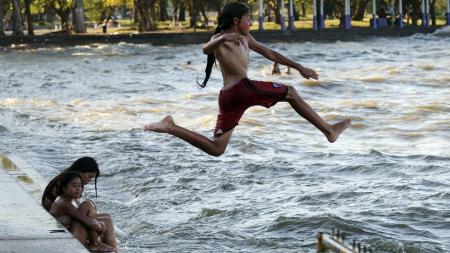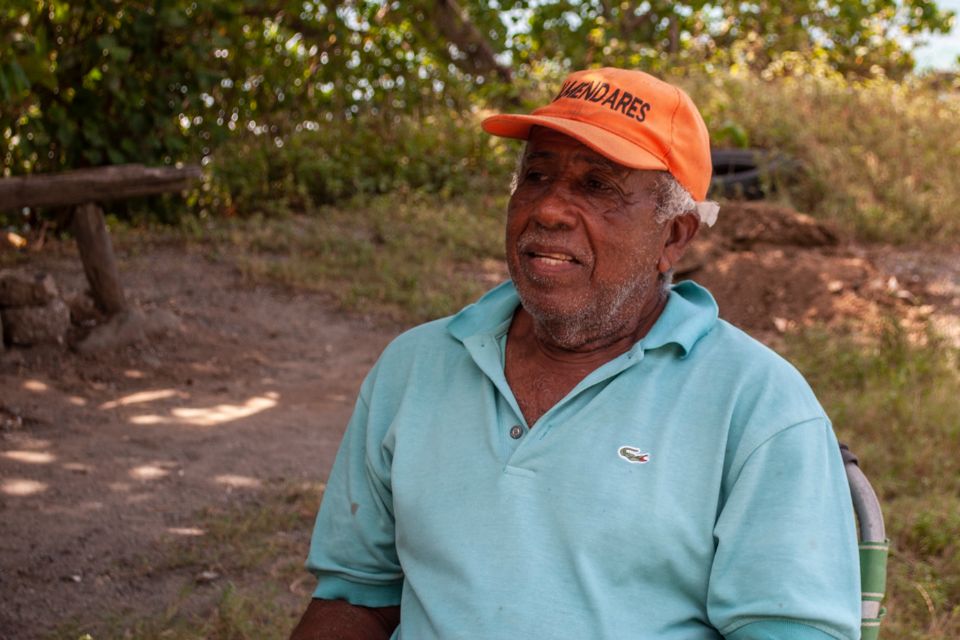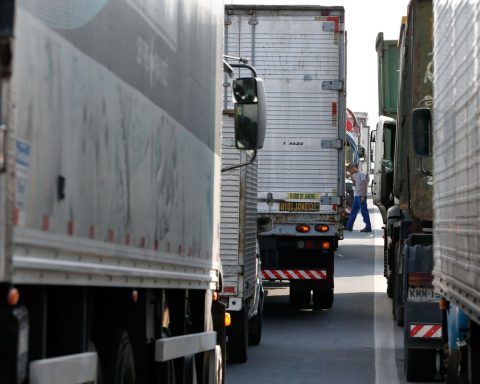The Autonomous City of Buenos Aires remained on red alert with a thermal record of 38.6 degrees at 2:00 p.m., which became the highest temperature in 117 years for this time of year, a phenomenon that had not occurred since 1906, according to the National Meteorological Service (SMN).
The heat persisted on Saturday night since although the temperature dropped to 32 degrees at 22, the thermal sensation reported by the SMN was 35.9 degrees.
The agency also indicated that for the first time in history, the City of Buenos Aires exceeded the maximum temperature threshold for a heat wave (32.3 °C) for 12 consecutive days.
He also stressed that “it is the second time in the month that (CABA) reaches the absolute record for March.” The other occasion was last day 2, when the temperature reached 38 °C.
According to the SMN alert system, the red alert applies to the Buenos Aires territory and the Buenos Aires districts of Almirante Brown, Avellaneda, Berazategui, Florencio Varela, Lanús, Lomas de Zamora, Presidente Perón and Quilmes.
Added to these towns are Berisso, Ensenada, La Plata, Brandsen, Cañuelas, San Vicente, Esteban Echeverría, La Matanza, Ezeiza and Merlo, where the highest temperature in the entire country was recorded on Friday when the wind chill touched 44 .1 degrees in the afternoon. Similarly, the City of Buenos Aires also reached suffocating highs by reporting 41.2 degrees.
Among the districts with the highest thermals in the country are the city of Buenos Aires (38.6), which also presents a percentage of humidity of 38%, and the Buenos Aires towns of Morón, Junín, Pehuajó, Moreno, Ezeiza, La Plata , Lomas del Palomar and Rosario in Santa Fe, with thermals that reach or exceed 38 degrees.

The red level is the maximum alert provided by the meteorological agency and indicates that the temperatures have a “high to extreme effect on health” and can be “very dangerous and affect all people, even healthy ones”, so It is recommended to increase water consumption and not expose yourself to the sun excessively, especially in central hours (between 10 and 16).
In turn, the national body issued an orange alert for towns in the north of the province of Buenos Aires such as Las Heras, General Rodríguez, Luján, Marcos Paz, San Andrés de Giles, Escobar, San Fernando, Tigre, Vicente López , San Isidro, as well as General San Martin, Hurlingham, Ituzaingó, José C. Paz, Morón, Moreno, among others, with maximum temperatures that will oscillate between 36 and 38 degrees.
The same alert is expected for a large part of the province of Entre Ríos in Gualeguaychú, Ibicuy, Diamante, La Paz and Nogoyá, and the province of Corrientes (in Concepción, Curuzú Cuatiá, General Alvear, Paso de los Libres, Santo Tomé), with the same thermals.
The temperature in the town of Gualeguaychú, in Entre Ríos, was among the highest in the SMN ranking with 37.6 degrees, the same as Concordia, with 37.5.
For the rest of the province of Buenos Aires; north and south of Entre Ríos, west of Corrientes, Santa Fe, Córdoba, southeast of Santiago del Estero, valleys and mountains of Catamarca, Tucumán, southeast of Santiago del Estero, north and south of San Luis, north of La Pampa and northeast Chubut governs yellow alert for temperatures that will oscillate between 34 and 38 degrees.
In the case of the orange level, the SMN warns of a moderate to high effect on health and indicates that the temperatures can be very dangerous, especially for risk groups; while in the yellow level the effect is mild to moderate and the most affected may be boys and girls, and people over 65, with chronic diseases.


















